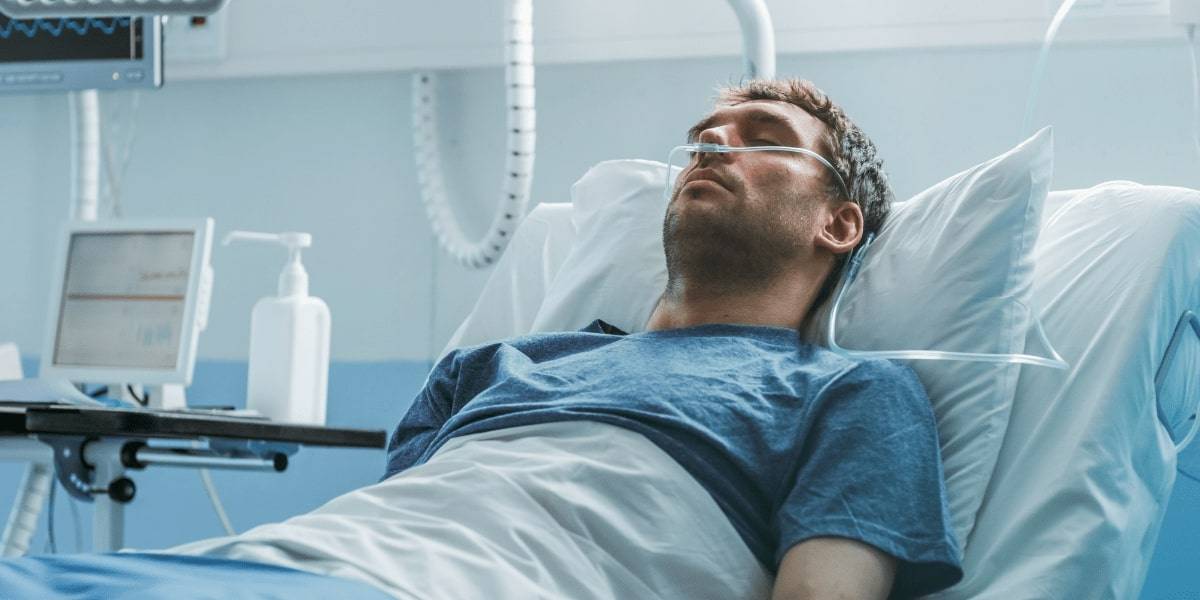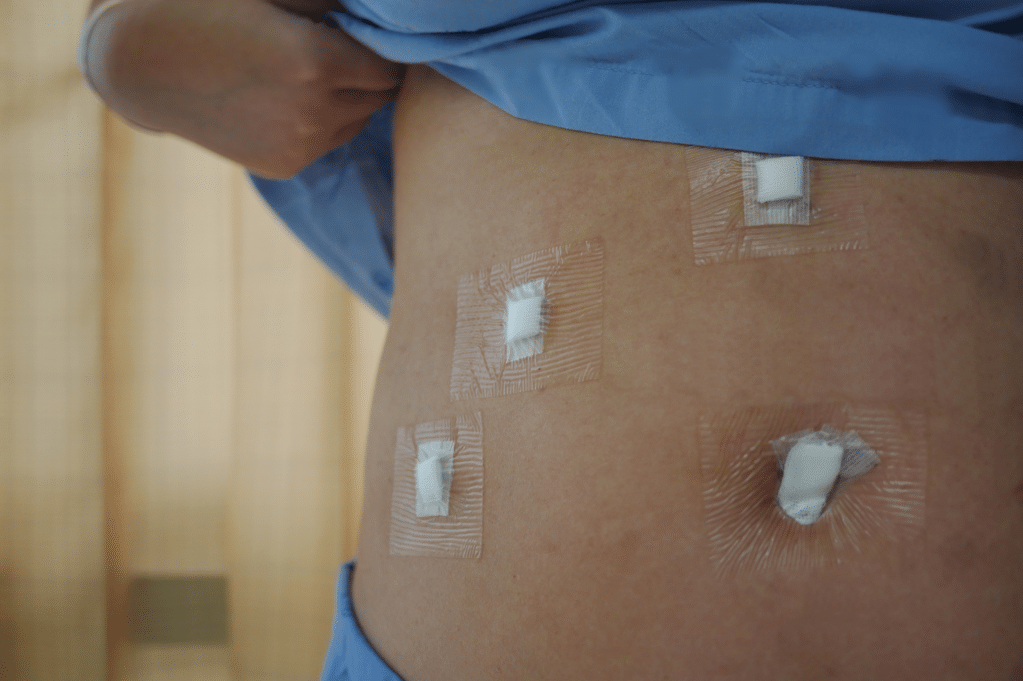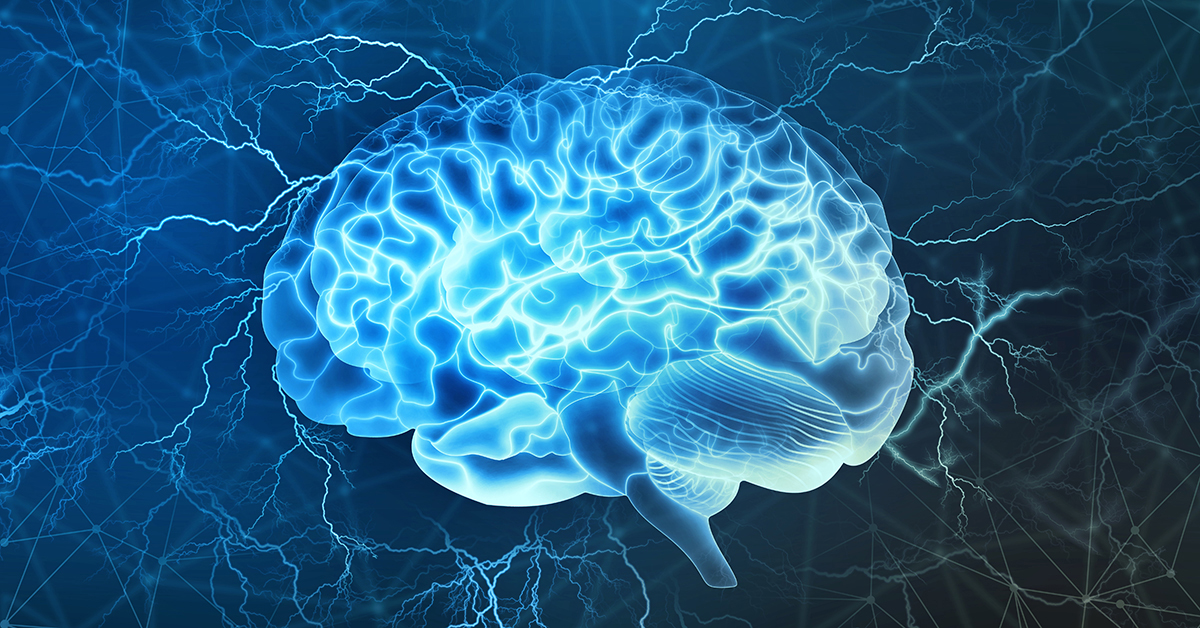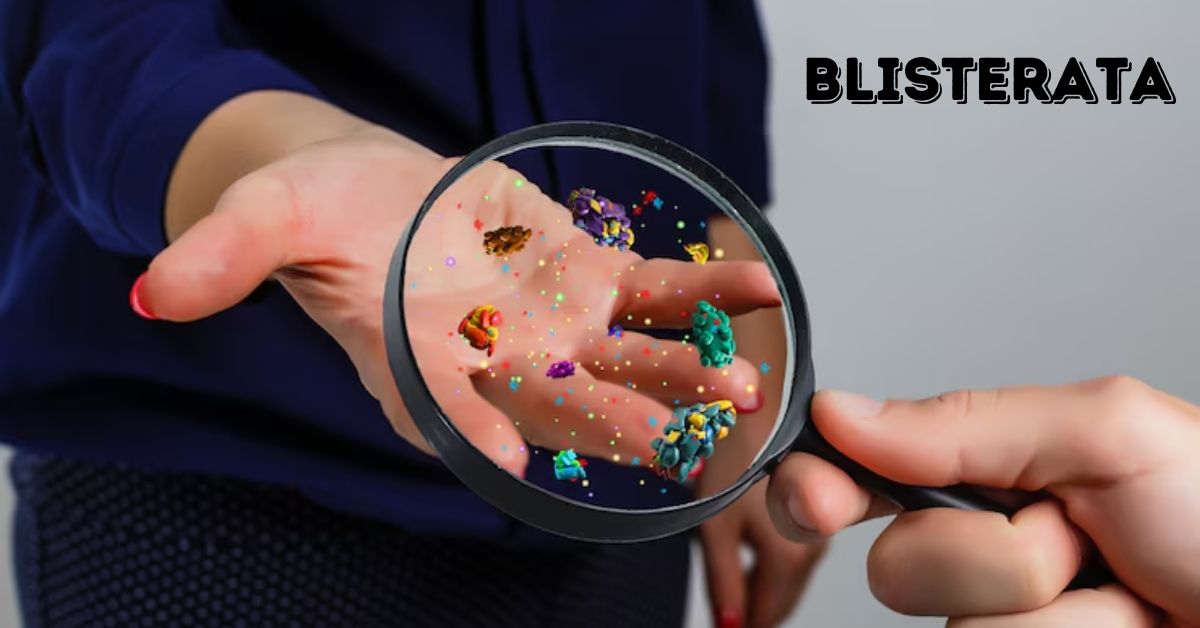Health
What is a Catastrophic Personal Injury?

Have you ever wondered what makes a personal injury catastrophic? Many people assume it just means a really severe injury, but there’s actually more to it. As someone who may need to file a personal injury claim, it’s important to understand what qualifies an injury as catastrophic.
Catastrophic Injuries Are Severe and Life-Altering
The most basic factor is that a catastrophic injury is extremely serious and has permanent, life-changing effects. We’re talking about injuries that cause permanent disability or disfigurement. These are not minor injuries that heal within weeks or months – they are severe enough to permanently alter your abilities and quality of life. For example, spinal cord injuries, traumatic brain injuries, and amputated limbs are considered catastrophic because they have permanent, devastating impacts on a person’s life. The effects of these injuries will be long-lasting and require major lifestyle adjustments.
Significant Financial Costs Are Involved
Another hallmark of a catastrophic injury is the immense financial burden it places on the victim. When an injury is severe enough to cause permanent disability, there are many costly expenses involved. These include long-term medical treatment, assistive devices, home healthcare, vehicle modifications, and loss of income.The financial toll over a lifetime can easily reach millions of dollars for a truly catastrophic injury. So the massive financial implications are a key factor in classifying an injury as catastrophic.
Normal Daily Functioning Becomes Impossible
Catastrophic injuries make it impossible to function normally on a daily basis. Activities that most people take for granted suddenly become extremely difficult or entirely out of reach. This includes self-care, mobility, communication, sleep, and career. For example, a brain injury can cause cognitive deficits that make normal communication and thinking impossible. A spinal cord injury can eliminate mobility and sensation. The inability to function independently is a tragic effect of catastrophic injuries.
Don’t Hesitate to Seek Experienced Legal Help
The aftermath of a catastrophic injury can feel overwhelming. But you don’t have to navigate it alone. An experienced personal injury attorney can help you pursue the compensation you need and deserve. They understand how to prove liability, calculate damages, and maximize your settlement. With knowledgeable legal help, you can take the best possible steps toward recovery.
Suffering a catastrophic injury isn’t easy, but you have the right to fight for your future. Get the justice you deserve with dedicated legal representation. The effects of the injury will remain, but claiming fair compensation can help you move forward. With an attorney experienced in catastrophic personal injury cases by your side, you can rest assured knowing you are in good hands. Visit Help in Colorado (https://www.helpincolorado.com/) to learn more.

Health
What Is Laparoscopic Cholecystectomy For Gallbladder Removal?

The gallbladder is a small organ located in the upper abdomen. It holds many other organs, including the stomach, and performs the function of collecting and storing a liquid called bile that helps the body break down food. Over time, small, hard deposits called gallstones can gather in the gallbladder, leading to health problems. The doctors may recommend a laparoscopic cholecystectomy to remove it.
What is Cholecystectomy?
A cholecystectomy is a surgical procedure to remove the gallbladder. Compared to a traditional open surgery, it is a minimally invasive procedure with a short downtime, leading to easy recovery. The surgery involves making small incisions of a half-inch or even less into the problematic area to minimise trauma, pain, and recovery time. In some cases, the surgeon may make a larger incision, depending on the size of your stones. A laparoscopic cholecystectomy is far more common and safe than other procedures.
What are the Benefits of Laparoscopic Cholecystectomy?
Laparoscopic cholecystectomy has become a popular gallbladder removal surgery in Singapore and other parts of the world because of the following reasons:
- Compared to traditional surgery, the procedure is minimally invasive and uses smaller surgical incisions.
- The smaller incisions created do not leave visible scars on the body.
- Laparoscopic cholecystectomy doesn’t cause major blood loss.
- After the surgery, you feel less pain which also cuts down the recovery time.
- Laparoscopic cholecystectomy ensures that your hospital stay is shorter so you can resume your daily activities.
- Nowadays, laparoscopic cholecystectomy is available in a majority of hospitals and healthcare centres. You can opt for it without breaking the bank.
How Do I Know If I Need Surgery to Remove my Gallbladder?
The most common and recognizable symptom of a diseased gallbladder is biliary colic – a pattern of pain in the upper right abdomen. It occurs in frequent episodes and makes you nauseated. Biliary colic is an early sign of gallbladder disease and the condition keeps getting worse over time.
Other signs that may require surgery to remove the gallbladder include the following:
- Swollen abdomen that is tender to touch
- Jaundice
- Large gallbladder polyps ruled out in an ultrasound
- Inflammation in the gallbladder
- Inflammation in the pancreas
- Fever
- Nausea and vomiting
How is Laparoscopic Cholecystectomy Performed?
Upon experiencing the above signs and symptoms, the healthcare provider will examine you and conduct important tests to diagnose the cause. If you qualify for the procedure, they will schedule a date to perform the same.
- The surgery is performed under a general anaesthetic and takes an hour to complete.
- After administering anaesthesia, the surgeon will make small cuts in your abdomen to insert tubes.
- A tube with a tiny camera will be placed through which the surgeon will watch a video monitor while using tools inserted through the other incisions to remove the gallbladder.
- If they are worried about possible gallstones or other problems, they may also use an imaging test like an X-ray or ultrasound.
- Afterward, they will close the incision and take you to the recovery area.
You will be allowed to go home on the day of the surgery. If required, you can stay overnight in the hospital.
Does Laparoscopic Cholecystectomy Cause Pain?
It is normal to feel some pain after the surgery. However, the degree of the pain is not very severe. You may experience pain in areas like the site of the incisions, abdomen, and sometimes in your shoulders caused because of the air put into your abdomen during the operation. The pain subsides within 24-48 hours of the surgery.
How Risky is Laparoscopic Cholecystectomy?
Laparoscopic cholecystectomy is not a risky procedure. However, some complications may arise, such as bleeding, infection of the surgical site, blood clot in the leg, blood clot in the lung, hernia on the site of the scar, chest infection, etc. It is advisable to listen to the instructions of your doctor after the surgery so that the recovery phase is smooth. It saves you from the complications of the surgery.
Takeaway
Each year, hundreds of people go through successful Laparoscopic cholecystectomy without complications or side effects. This minimally invasive gallbladder removal surgery in Singapore makes recovery easier than before. Reach out to your doctor upon experiencing any sign of a diseased gallbladder.
Health
Navigating Adult Scoliosis: Expert Bracing Techniques, DIY Screening, and Specialist Care in Phoenix

Adult scoliosis, characterised by an abnormal curvature of the spine, is a condition that affects many individuals, often leading to discomfort and reduced quality of life. Indeed, managing scoliosis in adulthood can be quite challenging, which is why it’s crucial to explore various management strategies – from expert bracing techniques to professional care in Phoenix.
Understanding Adult Scoliosis and Its Management
The journey toward managing adult scoliosis begins with understanding the condition itself. Scoliosis is not just a story of bending spines; it weaves complex patterns of pain, mobility limitations, and sometimes, emotional distress. Management strategies are diverse and tailored – aimed at relieving symptoms, slowing progression, and improving quality of life.
Bracing: An Expert Approach to Managing Curves
One of the keystones of adult scoliosis management is bracing. Modern adult scoliosis brace designs are a far cry from the bulky, rigid apparatuses of the past. These braces are sleek, tailored, and more importantly, effective in providing pain relief and preventing further curvature progression in certain cases. Still, it is not a one-size-fits-all solution, and seeking expert guidance is essential for success.
The Role of Braces in Adult Scoliosis
Why brace an adult spine? While bracing is often associated with paediatric cases of scoliosis, adults too can benefit greatly. A brace can offer support, redistribute pressure across the spine, and give relief during activities that exacerbate pain, such as standing or sitting for long periods.
DIY Screening: Early Detection at Home
As the adage goes, prevention is better than a cure. For those suspecting the onset or progression of scoliosis, early detection is key. Fortunately, you don’t necessarily need to rush to a specialist for an initial check. There are methods for how to check for scoliosis at home, which can be a useful starting point for anyone concerned about their spinal health. From simple observational tests to more precise online screening tools, individuals can take the first step in scoliosis management from the comfort and privacy of their homes.
When to Seek Professional Advice After Home Screening
Though these DIY methods are useful, they are not diagnostic tools. If your home screening suggests the possibility of scoliosis, it is crucial to follow up with professional help. Consulting a specialist can provide you with an accurate diagnosis and a comprehensive treatment plan.
Finding the Right Professional Care in Phoenix
Residents in Arizona’s urban heart are in luck when it comes to scoliosis care. For those seeking a scoliosis doctor Phoenix boasts a selection of specialists equipped with the expertise and tools necessary for managing adult scoliosis. Whether it’s for an initial diagnosis or ongoing treatment, finding a doctor that you trust and feel comfortable with is pivotal.
Bracing and Beyond: Comprehensive Scoliosis Care
A bracing solution might be a significant aspect of your scoliosis management, but it usually doesn’t stand alone. In conjunction with bracing, physical therapy, exercise regimes, and regular monitoring play substantial roles. A holistic approach to treatment is the most widely recommended and ensures each aspect of your well-being is addressed.
It might be tempting to hold off on seeking care, especially if pain levels are tolerable and daily activities are not significantly hindered. However, delaying can potentially lead to complications over time, with a risk of the curvature worsening. The proactive approach is always the best approach when it comes to scoliosis.
Support Networks and Education for Managing Adult Scoliosis
Lastly, it’s vital to remember you’re not alone on this journey. Support groups, educational resources, and communities dedicated to scoliosis exist to provide a network of support, sharing their insights and experiences. Keeping abreast of the latest research and management techniques gives individuals with scoliosis the control and power over their condition, rather than the other way around.
In summary, navigating the complexities of adult scoliosis requires a balance of personal vigilance, expert intervention, and the right resources. By understanding the role of a properly fitted adult scoliosis brace, employing home screening methods like how to check for scoliosis at home, and accessing expert care from a scoliosis doctor Phoenix, individuals can face scoliosis with confidence and competence.
For those with adult scoliosis, the path to improving your spinal health might seem daunting. But with the right balance of knowledge and professional support, it’s a path well worth travelling. Embrace the journey towards a more comfortable life with perseverance, informed decisions, and the support of specialists in Phoenix who understand the intricacies of your condition.
Health
Achieving Peak Fitness: The Essential Role of Elliptical Cross Trainers and Quality Equipment in Modern Exercise Routines

In the pursuit of peak physical fitness and optimal health, the incorporation of comprehensive exercise regimes remains pivotal. With the modern lifestyle leaning towards versatility and convenience, home workouts have risen to prominence, thereby setting the tone for what fitness enthusiasts expect from their training routines. Despite the numerous options available for home use, the elliptical cross trainer stands out for its remarkable efficiency in cardio workouts and muscle toning. Let’s delve into the far-reaching benefits of this instrument and why, along with other pieces of fitness equipment, it is so crucial in today’s exercise landscape.
The Unmatched Benefits of Elliptical Cross Trainers
The elliptical cross trainer is a cornerstone of aerobic training, known for offering a low-impact yet highly effective full-body workout. By mimicking natural motion patterns, the elliptical provides a smooth experience that’s gentle on joints, reducing the risk of impact injuries. It’s an ideal choice for those commencing their fitness journey, as well as seasoned athletes looking for cross-training options.
Ellipticals cater to a wide range of fitness levels and can be easily incorporated into a home gym setting. They are particularly beneficial for burning calories, improving cardiovascular fitness, and boosting endurance. Additionally, the convenience of using an elliptical cross trainer at home allows individuals to maintain workout consistency, which is crucial for long-term fitness success.
Quality Equipment: The Backbone of Effective Workouts
Whether it’s about sculpting muscle or shedding weight, integrating high-quality fitness equipment into your regimen is non-negotiable. Besides ellipticals, your home gym might include items like treadmills, exercise bikes, and free weights – each playing a specific role in developing various aspects of physical fitness.
It’s essential to choose equipment that suits your individual needs and goals. Superior quality gear assures durability, better ergonomics, advanced features, and overall provides a more enjoyable exercise experience. It’s an investment that pays dividends not only in improved health and well-being but also in the longevity of the equipment itself.
Professional Gym Setups: Elevating Your Fitness Journey with Gym Rigs
While home workouts are convenient, there’s a distinct advantage that professional gym setups offer. One of the standout elements in such environments is the presence of gym rigs, which are essential for strength training and functional workouts. These robust structures accommodate a variety of exercises, supporting anything from pull-ups and squats to suspension training.
Gym rigs are pivotal in progressing the intensity of workouts as they offer scalability for different strength levels. With attachments and accessories that can be added, individuals can tailor their strength training sessions precisely to their requirements, fostering better results and reducing the likelihood of hitting a plateau.
For those serious about their fitness, access to professional-grade equipment like gym rigs can make a significant difference. A well-equipped gym provides the tools and the environment to push your limits, encouraging growth and improvement that might be harder to achieve at home.
Finding the Right Balance
Fitness is a journey that’s unique to every individual, encompassing a variety of exercise formats and equipment choices. While some may prefer the convenience of home workouts focusing on cardio with an elliptical cross trainer, others might seek the challenge and versatility of professional-grade gym rigs.
It’s worth considering how different types of fitness equipment can complement each other within a routine. Cardiovascular health can be greatly enhanced by elliptical machines, whereas strength and stability may benefit more from the versatility of gym rigs with their expansive range of exercises.
The goal is to establish a routine that is both sustainable and effective, incorporating the right mix of equipment based on personal fitness objectives. Consistency matched with quality can lead to breakthroughs and satisfaction in your wellness journey.
Upgrading Your Home Gym
For those inspired to enhance their at-home workout experience, investing in an elliptical cross trainer can be the first step towards a well-rounded fitness routine. While space and budget constraints are to be considered, remember that quality trumps quantity when it comes to selecting the right fitness equipment.
Research and evaluate your options, bearing in mind the kind of workouts you enjoy and the goals you aim to achieve. High-quality, multi-functional equipment like ellipticals are not only space-efficient but also provide a variety of workout options.
The Bottom Line
Ultimately, the effectiveness of your fitness routine boils down to the choices you make in your exercise equipment. A fitness equipment arsenal that includes an elliptical trainer and, for those who pursue a higher level, professional setups with gym rigs, is conducive to a comprehensive fitness regimen that caters to all facets of your health.
Whether you’re setting up at home or hitting the gym, priority should always be given to the quality and versatility of equipment. By doing so, you can ensure that every workout leads you a step closer to your personal peak fitness. So, take control of your fitness journey today and make room for the equipment that truly makes a difference.
Health
Maximizing Vitality: The Synergy of Magnesium Chelate and CoQ10 Supplements for Enhanced Health

When it comes to maintaining optimal health and energy levels, the combination of certain key nutrients can have a profound impact on our overall wellness. Amongst these vital nutrients, magnesium chelate and coq10 supplements standout as crucial players in the intricate dance of bodily functions that contribute to a more vibrant and energetic life.
Understanding the role that these nutrients play individually is important, but recognising their potential when combined can offer even greater health dividends. Let’s delve deeper into how this dynamic duo can be your allies in the quest for peak physical and mental performance.
The Power of Magnesium Chelate
Magnesium is an essential mineral that’s critical for over 300 biochemical reactions in the human body. It plays a crucial role in muscle function, nerve transmission, blood glucose control, and the production of energy. However, not all forms of magnesium are created equal. Magnesium chelate, specifically, is renowned for its superior absorption and bioavailability compared to other types of magnesium supplements.
By choosing to buy magnesium tablets that contain magnesium chelate, you provide your body with a form of magnesium that’s easier to assimilate. This can have direct implications for your energy levels, as magnesium is integral to the process whereby your body converts food into usable energy.
Add to this, magnesium’s beneficial effects on sleep quality and stress reduction, and you have a supplement that not only bolsters your daytime vitality but also improves your restorative night-time rest.
Adding a Spark with CoQ10
Coenzyme Q10, commonly known as CoQ10, is another powerhouse in the energy production process. This vitamin-like compound is found in every cell of the body, particularly in the energy-intensive organs such as the heart, liver, and kidneys. CoQ10 is involved in producing Adenosine Triphosphate (ATP), the energy currency of the body.
Just like magnesium, CoQ10 levels in the body can decrease with age, leading to reduced energy and vitality. Taking a coq10 supplement can support your cell’s ability to produce more ATP and thus, maintain a more youthful energy level. It’s also beneficial for heart health and antioxidant protection, combating free radicals that can cause cellular damage.
Harnessing the Synergy for Your Wellness
It’s not just about what magnesium chelate and CoQ10 can do on their own; it’s the synergy of combining these nutrients that really amplifies their benefits. Magnesium assists in the activation of CoQ10, which means that when taken together, they are more effective in promoting energy production and muscle health.
Fatigue, a common complaint among adults, often arises from nutritional deficiencies. Addressing these with the right supplements can be transformative. Thinking holistically about your nutrient intake allows you to maximise the benefits for your energy levels and overall health.
Making the Right Choices for Supplements
When you decide to buy magnesium tablets or any supplements, it’s paramount to choose high-quality products that provide the most bioavailable form of the nutrients. This ensures that your body can actually use the minerals and vitamins you’re taking to their full potential.
Also, it’s essential to consider the correct dosages and to be aware of how different supplements might interact with each other and with prescription medications. Consulting with a healthcare provider is always recommended when beginning a new supplement regimen.
Practical Tips for Incorporating Supplements into Your Routine
Incorporating magnesium chelate and CoQ10 into your daily routine can be done in a few easy steps. Consistency is key; taking your supplements at the same time each day can enhance their efficacy. Moreover, certain dietary and lifestyle changes can enhance the absorption and effectiveness of these nutrients.
For instance, consuming foods rich in vitamin B6 can help improve magnesium’s function in the body, while taking CoQ10 with a meal that includes healthy fats can increase its absorption, given that CoQ10 is fat-soluble.
Conclusion: A Path to Enhanced Vitality
Understanding the role of essential nutrients in your health is the first step toward enhanced vitality. With the combination of magnesium chelate and CoQ10 supplements, you’re not just boosting your energy levels, you’re investing in a holistic approach to your long-term wellness.
The journey to better health doesn’t stop here; it’s an ongoing process of learning and adaptation. Embrace the synergy of magnesium chelate and CoQ10, and feel empowered as you take proactive steps to fuel your body and mind with the resources they need to thrive. Remember, vitality is a choice, and with the right nutritional support, it’s within your reach.
Health
Soothe Your Aches Away: Exploring the Benefits of Topical Muscle and Joint Pain Relief Solutions

Whether it’s a result of a rigorous exercise routine, chronic conditions, or the unavoidable wear and tear that comes with aging, muscle and joint pains can severely impact one’s quality of life. Thankfully, advancements in healthcare have given rise to various ways to manage these discomforts, one of the most convenient being topical treatments.
The Rise of Topical Treatments
Topical pain relief options have increasingly become a go-to solution for many looking to alleviate muscle and joint discomfort. Unlike systemic medications that affect the whole body, topical treatments target pain at its source. They can provide fast-acting relief without the digestive system involvement, making them a choice solution for those seeking an alternative to oral medications and their associated side effects.
In Australia, the popularity of topical treatments has risen dramatically. With more people seeking natural, non-invasive remedies, the market is abundant with different forms of muscle pain relief gel, creams, and sprays. These products promise to bring solace to those suffering from various forms of musculoskeletal discomfort.
Advantages of Topical Applications
Topical applications have numerous benefits, especially for managing localised pain. These advantages include a lower risk of systemic side effects, convenience of use, and the ability to be applied directly to the affected area. This direct approach allows for concentrated therapy where it is needed most.
Moreover, many topical remedies combine traditional pain-relief compounds with natural ingredients, offering not only immediate relief but also aiding in longer-term recovery. The incorporation of natural elements in formulating topical pain relief solutions is a testament to their advantageous soothing properties.
Components of Topical Treatments
Topical pain relievers come packed with a variety of active ingredients. Some common elements include nonsteroidal anti-inflammatory drugs (NSAIDs), capsaicin, or menthol. However, a growing interest in holistic wellness has seen an upsurge in the use of herbal extracts and essential oils, prized for their anti-inflammatory and healing properties.
Choosing the Right Product
When selecting a topical pain-relief option, it’s crucial to consider the type and severity of your pain, any skin sensitivity issues, and the specific ingredients of the product. Whether you opt for a muscle pain relief gel or a joint pain relief cream, ensure that it aligns with your needs and preferences. Reading labels and understanding the intended use of the product is key to achieving the best results.
Application Techniques
Proper application techniques can significantly enhance the efficacy of topical treatments. Most products will provide instructions for use, but generally, a small amount of the gel, cream, or ointment should be gently massaged onto the affected area. This not only aids in the absorption of the product but also increases blood flow, which can help alleviate pain.
Ensuring the skin is clean and free from any other lotions or moisture before application is equally important for the treatment to penetrate effectively. Additionally, many users find it beneficial to apply the product after a warm bath or shower when the pores are more receptive.
The Scientific Backing
Research into topical treatments continues to demonstrate substantial effects in managing pain. A vast collection of studies highlight their capacity to provide significant relief for those who suffer from chronic musculoskeletal conditions. As the scientific community grows more interested in the area, the data supporting these treatments becomes even more robust.
A Holistic Approach to Pain Management
Topical applications work best as part of a broader, holistic approach to managing pain. Complementing these treatments with physical therapy, exercise, and good nutrition can further enhance their positive impacts. It’s always recommended to discuss with healthcare professionals before incorporating any new treatment into your regimen, especially if you have underlying health concerns.
Innovations and the Future
As the demand for non-invasive and effective pain management strategies grows, so too does innovation in the development of topical treatments. The focus has shifted towards creating products that not only relieve pain but also nurture and repair affected tissues.
Developers are continually exploring new combinations of natural and synthetic ingredients to maximise relief and foster the body’s healing capabilities. As such, we’re seeing more targeted and potent formulations entering the market, providing consumers with an ever-expanding array of options to manage their pain.
Within the realm of topical treatments, products like the joint pain relief cream are evolving, often including scientifically-backed ingredients combined with natural extracts to form a dual-action effect on muscle and joint pain.
Conclusion
In managing muscle and joint discomfort, topical treatments offer a practical and uniquely beneficial solution. Their ease of use, combined with the ability to target pain directly, makes these products a valuable addition to one’s pain management toolkit. With new advancements continually on the horizon, individuals seeking relief have reason to remain optimistic about their ability to manage and mitigate pain effectively.
For Australians grappling with discomfort, it’s affirming to know that solutions such as muscle pain relief gel, topical pain relief options, and joint pain relief cream are not only accessible but rooted in a scientific understanding that prioritises both immediate relief and long-term health benefits. The future of pain management looks bright, indeed.
Health
What is the coronavirus? Symptoms, infection and virus prevention:

Coronaviruses are a family of viruses that primarily cause respiratory infections. “Coronaviruses can cause mild infections such as colds, but also more serious infections, such as pneumonia,” explains Juan Pablo Horcajada, Chief of the Infectious Diseases Service of the Hospital del Mar de Barcelona and a member of the Spanish Infectious Diseases Society, to EL PERIÓDICO and Clinical Microbiology (SEIMC).
“The name of the new Chinese coronavirus is 2019-nCoV: it has a different genome than other coronavirus, it is new within the family and was not known.” The Chinese coronavirus has a 3% mortality rate.
- How is the virus spread?
Although it was initially thought that it was spread from animals to humans (the outbreak began in an animal market in the Chinese city of Wuhan), we now know that it can be spread from person to person, by coughing or sneezing. Recently it has been known that it is also spread during the incubation phase, while the person has not yet developed the symptoms.
The National Federation of Ambulance Entrepreneurs (ANEA) has disseminated a series of training videos to establish a protocol with standardized guidelines for the adequate and safe care and transfer of patients with infectious diseases, such as the coronavirus.
- What are the symptoms?
Five are the main symptoms of a Chinese coronavirus infectio
- What prevention measures must be taken?
“The measures that citizens must take are hand hygiene, covering up when coughing or sneezing, avoiding contact with people who have flu-like symptoms and avoiding trips to the Wuhan area,” explains Horcajada, who adds that “there is no vaccine or antiviral treatment ” for the coronavirus.
Only their symptoms are treated, with paracetamol or ibuprofen and hydration in mild cases. In severe cases, thermodynamic and / or respiratory support is performed.
- Are there reasons to be alert in Spain?
“It’s an emerging disease and people are worried because we live in a globalized world,” says Horcajada. “We are prepared to deal with this virus because we have powerful epidemiology and public health services and there is sufficient preparation to prevent its spread,” concludes this expert.
Although the Spanish Ministry of Health said it considered “very low” the risk of introducing the new coronavirus in Spain , a first case has already been confirmed , that of a German tourist in La Gomera .
In addition, there are other reasons to be alert: health authorities link this virus to Severe Acute Respiratory Syndrome (SARS), whose outbreak also began in China and in 2003 killed 813 people worldwide (646 of them in China). Even so, the lethality rate of 2019-nCoV (3%) is lower than that of the SARS (10%).
- How has the epidemic progressed?
Thus we have counted the first days of the coronavirus epidemic and its arrival in Spain:
China enters money to stop the stock market crisis;
The People’s Bank of China has announced that it will inject 1.2 billion yuan into the country’s economy, some 156,000 million euros, to mitigate the negative effects of the coronavirus outbreak. The different bags of the Asian country will reopen its doors on Monday, after they remained closed since last January 23 on the occasion of the celebration of the Chinese New Year. Experts assume that the session will be very volatile in the stock market and with this measure they aim to mitigate the impact on the companies most affected by the health crisis.
Italy manages to isolate the coronavirus thanks to two patients
Italian scientists have announced that they have managed to isolate the coronavirus that causes Chinese pneumonia thanks to two admitted patients. The Find facilitates the task to develop a treatment and a vaccine.
Discarded the case of the child of Catalonia
The Public Health Agency of Catalonia has ruled out that the 8-year-oldboy from Wuhan (China) suspected of having the coronavirus has contracted the disease. The tests done this morning at the Hospital Clínic have been negative.
Spain rules out border closures
The director of the Coordination Center for Health Alerts and Emergencies of the Ministry of Health, Fernando Simón, has requested that there be no discriminatory attitudes against people from China and discards the closing of borders “unless last position if really necessary”.
“There is some concern in the population and certain discriminatory attitudes against people from China are coming to be,” Simon lamented Sunday at the press conference following the ministerial meeting for the evaluation and monitoring of the coronavirus.
Discarded 11 suspected cases
The director of the Center for Alerts and Emergencies of the Ministry of Health, Fernando Simón, had already begun his press conference when a possible new suspect has been known in Catalonia. Although he does not know the case, he has stressed that in Wuhan they have been in quarantine for 10 days, so if the child comes from there, it is more likely to be affected by the flu , which generates many more infected than the coronavirus both in China and throughout the northern hemisphere, that by the new pneumonia of Wuhan.
The way to proceed in suspicious cases is that from the hospital a sample is sent to the Carlos III institute, which is in charge, in a few hours, in determining whether or not it suffers from coronavirus. In Spain, at least 11 suspected cases have already been ruled out.
The German, practically without symptoms
The director of the Center for Alerts and Emergencies of the Ministry of Health, Fernando Simón, explained about the positive case, the German tourist, that “everything is going well, practically has no symptoms.”
A search has been made and all contacts have been identified except those on the plane, but it is believed that as there were six German tourists they traveled all together, so it is not thought that there is an excessive risk. It is a reduced number of contacts and the majority of low risk. Only one of them, Simón points out, is considered an extreme contact and has been placed in self-quarantine.
An 8 year old boy, a possible case in Catalonia
The Public Health Agency of Catalonia investigates a suspected case of coronavirus that meets both criteria (clinical and epidemiological). This is an 8 year old boy from Wuhan (China).
Agency sources have explained through their Twitter account that the tests that will be performed in the epidemiological surveillance laboratory “will finally rule out or confirm the case.”
China prohibits funerals
Those killed by the coronavirus cannot be buried wherever their relatives want or have a farewell ceremony, after the Chinese government today issued a strict protocol for the treatment of corpses, as part of its efforts to control the outbreak.
The remains of the deceased infected by the new coronavirus should be buried in a designated funeral home and near where they are , will not be transported between different regions and will not be preserved by burial or other means, says a protocol issued by the National Health Commission , the Ministry of Civil Affairs and the Minister of Public Security.
Funeral traditions such as farewell ceremony is prohibited and the bodies must be disinfected and placed in a bag sealed by medical workers and cannot be opened after sealing.
First killed by the coronavirus outside of China
A man of Chinese nationality died yesterday in the Philippines as a result of pneumonia caused by the Wuhan coronavirus, the first death by this pathogen that occurs outside the borders of China. The deceased is a 44-year-old man who entered the San Lázaro Hospital in Manila on January 25. It was the couple of the 38-year-old Chinese woman who had so far been the only confirmed case in the Philippines, where there are four other suspects.
304 dead and 14,380 infected
The number of deaths from the new coronavirus causing Wuhan pneumonia in China has risen today to 304 (45 more than Saturday),while the number of infected in Chinese territory stands at 14,380 (2,590 more than the day before) ), according to the daily report of the Chinese National Health Commission.
Saturday, February 1
The plane with 350 Europeans who were in Wuhan delays its arrival in Marseille
The Portuguese plane that will repatriate 350 citizens of various European nationalities from the Chinese city of Wuhan, the epicenter of the coronavirus, has been delayed due to delays in several authorizations and is expected to arrive in Marseille on Sunday.
The aircraft, an Airbus 380 of the Portuguese company Hi Fly, chartered by the European Union, already has everything ready to leave tonight from Wuhan after having accumulated several delays that have complicated the repatriation plan, started on Thursday morning when it took off from the Portuguese city of Beja.
He made a first stop in Paris to pick up a team of doctors and health experts, and it was expected that from there he would continue immediately to Vietnam, the last stage of his route to Wuhan, but the delay in receiving authorization from China for Europeans to leave The country delayed the plans.
The flight ended up leaving the French capital on Friday night, and in Vietnam accumulated a new delay this Saturday, this time because the air connection between this country and China is interrupted by the coronavirus and an extra authorization had to be achieved.
Once these problems are overcome, the Portuguese media maintain that the Portuguese flight takes off tonight from Wuhan with 350 people “of different nationalities”, including 17 Portuguese, without the Portuguese government wanting to confirm arrival times by, they argue, prudence.
The Portuguese Foreign Minister, Augusto Santos Silva, has simply said, at the insistence of journalists, that is the operation “is going well,” and has refused to give details that could “harm the operation.”
Despite this reservation, the media insist that it will arrive in Marseille this Sunday, and from there the Portuguese will follow their country in an Air Force plane
Russia suspends travel without a visa for tourists to China and from China
Russia has announced that it was suspending travel without a visa for tourists to and from China to help contain the outbreak of a new coronavirus that emerged in China. A bilateral visa-free regime for tourist groups agreed in 2000 will be suspended as of February 2, according to a government decree. Russia will also temporarily stop accepting and issuing documents for work visas to Chinese citizens.
Russia reported its first two cases of coronavirus on Friday and restricted direct flights to China, its main trading partner. The Russian army will begin evacuating Russian citizens of China due to the outbreak.
First case of coronavirus on the east coast of the US, the eighth in the country
The health authorities of the United States reported on Saturday the first case of coronavirus on the east coast of the country, a man from Boston (Massachusetts) who has become the eighth infected in the North American country.
This is a man between 20 and 30 years old who lives in Boston and recently traveled to the Chinese province of Wuhan, the main focus of the coronavirus outbreak, the Massachusetts Department of Public Health said in a statement.
The young man “sought medical attention shortly after returning to Massachusetts,” has been “isolated since then and will continue to be so” until he receives contrary orders from the authorities, who have located “his few close contacts” and are monitoring them in case they exhibited ” symptoms, “notes the note.
“The risk (of contracting the coronavirus) for the general public remains low,” said the executive director of the Boston Public Health Commission, Rita Nieves, in the statement.
Nieves said that the infected man is “stable” and that health authorities feel prepared and “in a good state to respond to the situation.”
China extends holidays in the province of focus
The Hubei provincial government of China, whose capital is Wuhan, epicenter of the coronavirus epidemic, has extended the Lunar New Year vacations until February 13 to try to stop the coronavirus outbreak, the newspaper ‘Hubei’ reported.
Vic’s quarantined neighbor in Gómez Ulla refuses his family’s visit
Albert Aumatell, goalkeeper coach of Vic (Osona) who arrived from Wuhan last Friday along with 19 more people and who is isolated with the group in a plant of the Gómez Ulla hospital in Madrid, explains that he prefers not to see his person in person family during the quarantine to avoid exposing them to any risk .
Health
Beyond the Battlefield: Understanding Agent Orange’s Impact on Veterans’ Health

Key Takeaways:
- Understanding the history and composition of Agent Orange
- Recognizing the immediate and long-term health effects faced by veterans
- Exploring the support and resources available for affected veterans
- Learning about the role of advocacy and legal assistance in securing deserved benefits
Agent Orange exposure has led to severe health issues for veterans, including cancers, diabetes, and neurological disorders. Understanding its impact involves recognizing long-term effects, securing VA benefits, and accessing specialized healthcare. Ongoing research and advocacy are vital for addressing these health challenges and supporting affected veterans’ well-being.
History of Agent Orange
A chemical known as “Agent Orange” was used to destroy crops and forest cover during the Vietnam War. It was a combination of 2,4-D and 2,4,5-T chemicals and was notorious for containing dioxin, a pollutant that caused severe health hazards. The widespread use of this herbicide had significant repercussions for the environment and the health of those exposed to it. Many veterans who came into contact with this substance are now seeking compensation and advice from Agent Orange exposure attorneys to address their ongoing health issues and secure deserved benefits.
The impacts of Agent Orange were not confined to the battlefield. The dioxin poisoning in Agent Orange, one of the most toxic compounds ever found, has been linked to several health problems, from acute symptoms to debilitating chronic disorders. Historically, veterans who served in areas affected by Agent Orange have had to navigate complex bureaucratic systems to have their health conditions recognized and compensated. This has often led to frustration and despair among veterans who feel neglected by the institutions meant to support them.
Immediate Health Effects
Numerous veterans who were exposed to Agent Orange reported experiencing severe headaches, skin rashes, and respiratory problems right away. These immediate health effects were often the first indication of the herbicide’s toxicity. Dermatological conditions like chloracne, a severe skin disorder resembling severe acne, were among the most common immediate reactions, manifesting shortly after exposure and persisting without proper treatment.
For those on the battlefield, these symptoms were not just physical afflictions but also impediments to their ability to perform military duties effectively. The psychological stress that accompanied these physical symptoms only compounded the hardships faced by veterans during and after their service in Vietnam. The combination of physical ailments and mental anguish created a challenging environment for many, making it difficult for them to adapt to life post-service.
Long-Term Health Effects on Veterans
Long-term exposure to Agent Orange has led to various chronic illnesses among veterans. Studies have linked it to cancers, diabetes, and neurological disorders. Conditions such as ischemic heart disease, Parkinson’s disease, and certain types of cancer, including soft tissue sarcoma, non-Hodgkin’s lymphoma, and chronic B-cell leukemias, have been particularly prevalent among exposed veterans.
Furthermore, the health effects extend beyond the veterans themselves. There is evidence suggesting genetic damage that may be passed on to their offspring, implicating potential health risks for future generations. Families of veterans often face medical and emotional challenges in dealing with the legacy of Agent Orange exposure. This intergenerational impact highlights the pervasive and lasting consequences of chemical warfare agents on human health.
The continuous efforts to understand these health impacts have led to a growing body of research and advocacy. However, more must be done to ensure comprehensive care and support for all affected individuals, including family members who may also suffer from exposure.
Support and Resources for Affected Veterans
Several organizations offer support to veterans affected by Agent Orange. These support systems include medical support, counseling services, and assistance navigating the complex benefits system. Veterans can access health care benefits through the Department of Veterans Affairs (VA) and various veteran service organizations that specialize in addressing the unique challenges faced by those exposed to harmful substances during their service.
It is impossible to exaggerate the value of peer and community support. Advocacy groups and nonprofit organizations provide platforms for veterans to share their experiences, find camaraderie, and access vital resources. These groups also play a crucial role in lobbying for better healthcare policies and benefits for affected veterans. The support network extends to educational resources and outreach programs to inform veterans and their families about available services and benefits.
Advocacy and Legal Assistance
Advocacy is essential to guaranteeing that veterans impacted by Agent Orange get the benefits they are entitled to. Legal assistance is often necessary to navigate claims and appeals. Agent Orange exposure attorneys are instrumental in helping veterans secure compensation and recognition for their service-connected disabilities. These attorneys are skilled in handling the particular difficulties presented by chemical exposure claims since they focus on veterans’ issues.
Organizations dedicated to veterans’ rights have been pivotal in this ongoing battle for justice. Continuous advocacy and legal initiatives have led to policy changes and increased awareness about the long-term impacts of Agent Orange on veterans’ health. Legal battles have often resulted in precedents that benefit all veterans, leading to more effective recognition of service-related health conditions and streamlined claims processes.
Moreover, collaboration between medical professionals, legal experts, and veteran advocates has been essential in addressing veterans’ multifaceted challenges. Ensuring accessibility to legal resources and support is crucial to providing comprehensive care and justice for all exposed veterans. This collaborative approach fosters a holistic support system that addresses veterans’ physical, mental, and legal needs.
Concluding Thoughts
The legacy of Agent Orange is a sad reminder of the long-lasting impacts of chemical warfare. Even while much progress has been made in identifying and aiding impacted veterans, ongoing work is still needed to guarantee that every veteran gets the benefits and care they are entitled to.
The role of advocacy, legal assistance, and community support cannot be underscored enough. By working together, we can honor the sacrifices of our veterans and strive toward a future where their health and well-being are fully safeguarded. Society must recognize the sacrifices of those who serve and ensure that they and their families are cared for, both now and in the future.
Health
Neurological assessments are crucial in detecting and monitoring disorders of the nervous system

Neurological assessments are crucial in detecting and monitoring disorders of the nervous system. They provide a comprehensive evaluation of a patient’s neurological health, helping doctors diagnose conditions ranging from migraines to more serious issues like epilepsy or multiple sclerosis. If you or a loved VIP are scheduled for a neurological evaluation, understanding the process can help alleviate anxiety and prepare you for the examination. Below, we delve into the components, purpose, and implications of this important medical procedure.
Understanding the Purpose of a Neurological Assessment
When a patient is referred for an assessment, it indicates the need for a detailed check of the nervous system’s functionality. Neurologists use these evaluations to detect abnormalities or changes that could indicate the presence of a condition. By examining various aspects of the nervous system, including cognitive functions, motor skills, sensation, and reflexes, a clearer picture of a patient’s neurological health is obtained.
The assessment begins with a thorough review of the patient’s medical history, which can provide vital clues to their current condition. Doctors look for patterns, triggers, and any familial incidence of neurological conditions that may influence the patient’s health. This historical perspective is essential as it guides the physical examination and subsequent test selection.
Preparing for Your Neurological Examination: A Patient’s Guide
As the date of your neurological examination approaches, it’s essential to prepare adequately to ensure the evaluation’s success. Patients are typically advised to gather and bring along their full medical records, list of current medications, and a description of symptoms. Details like when the symptoms began, their frequency, triggers, and any other associated conditions are valuable information for the neurologist.
Physical preparation, though often less strenuous than mental preparation, is still important. It may include instructions to avoid certain substances like caffeine or alcohol for a set time before your appointment, as they can affect neurological functioning and influence some test results. Additionally, getting enough sleep the night before your exam helps ensure that fatigue does not impact your performance on cognitive and motor tasks.
Emotional preparation also plays a part. Feelings of anxiety and stress are common among patients facing a neurological examination. Engaging in stress-reduction techniques such as meditation or simply having a supportive person accompany you can help alleviate tension. Maintaining a positive and open mindset, ready to engage with the neurologist’s queries, can contribute significantly to a smooth assessment process.
Key Components of the Neurological Examination Explained
A neurological examination comprises a series of tasks and observations designed to evaluate different aspects of the nervous system. One fundamental part of the exam is the assessment of cognitive abilities, which includes tests of memory, attention, language skills, and problem-solving. Such cognitive function tests help identify any impairments that might be symptomatic of neurological conditions.
The physical examination typically follows, assessing coordination, strength, balance, and sensation. Simple tasks like walking in a straight line or touching your nose with your finger provide valuable insights into how well the brain and nerves communicate with muscles. Abnormalities detected during these tasks might suggest issues within specific neural pathways.
Interpreting Results: What Your Assessment Can Reveal
After completing a neurological assessment, the results allow the physician to draw conclusions about the patient’s neurologic health. Normal findings may provide reassurance and rule out certain neurological disorders. However, certain symptoms or test results may suggest the need for further evaluation or confirm the suspicion of a neurological condition.
Abnormal results in one or more areas can be indicative of various issues. For example, delays in processing speed or problem-solving abilities can suggest cognitive impairment, while difficulties with balance or coordination may point to cerebellar disorders. It’s important to remember that an abnormal finding does not necessarily equate to a severe diagnosis; many variables are considered in the interpretation of these results.
The neurologist will typically discuss the findings of the examination with the patient, clarifying what the results may signify and what steps should be taken next. If a diagnosis can be made, the specialist will suggest a course of action that may include medication, lifestyle adjustments, therapy, or further tests. It’s here that the patient’s treatment journey often begins, with an informed understanding of their condition and the path forward.
Overall, neurological assessments are invaluable components of modern medicine, providing insights into a patient’s nervous system health and charting a course for effective treatment. They empower both doctors and patients to confront neurological issues with clarity and a sense of control. With the right preparation and understanding, the assessment can be a smooth and productive experience, paving the way for improved health outcomes.
Health
Mental Illness Residential Treatment: A Path to Recovery

Mental illness residential treatment centers provide a holistic approach to recovery, offering individuals a safe and supportive environment to heal and grow. This blog delves into the benefits of such centers, the comprehensive treatment plans they offer, and the positive outcomes associated with residential care. It highlights the importance of community, personalized care, and the structured environment these centers provide. FAQs are included to address common concerns and provide clarity on what to expect from mental illness residential treatment.
In today’s fast-paced world, mental health issues have become increasingly prevalent. Whether it’s due to the pressures of daily life, traumatic experiences, or genetic factors, many individuals find themselves struggling with mental illness. For some, traditional outpatient therapy and medication management may not be sufficient. This is where mental illness residential treatment centers come into play. These centers offer a unique and comprehensive approach to recovery, providing a supportive environment where individuals can focus entirely on their healing journey.
Understanding Mental Illness Residential Treatment
Mental illness residential treatment centers are specialized facilities designed to provide intensive, around-the-clock care for individuals dealing with severe mental health issues. These centers offer a structured and safe environment where patients can receive personalized treatment plans tailored to their specific needs. Unlike outpatient programs, residential treatment involves living at the facility for an extended period, allowing for continuous monitoring and support.
The Benefits of Residential Treatment
One of the primary benefits of mental illness residential treatment centers is the holistic approach they take to recovery. This means addressing not just the symptoms of mental illness but also the underlying causes and contributing factors. Here are some of the key advantages of choosing residential treatment:
Comprehensive Care: Residential treatment centers provide a wide range of therapeutic services, including individual therapy, group therapy, medication management, and alternative therapies such as art and music therapy. This comprehensive approach ensures that all aspects of a person’s mental health are addressed.
24/7 Support: One of the biggest challenges for individuals with severe mental illness is managing symptoms outside of therapy sessions. In a residential treatment center, patients have access to professional support around the clock, which can be crucial during moments of crisis or distress.
Structured Environment: The structured environment of a residential treatment center can be incredibly beneficial for individuals struggling with mental illness. Daily routines, scheduled activities, and consistent therapy sessions provide stability and predictability, which can help reduce anxiety and stress.
Community and Peer Support: Living in a residential treatment center means being surrounded by others who are on similar journeys. This sense of community and peer support can be incredibly empowering, providing individuals with a sense of belonging and understanding that they might not find elsewhere. Individual Therapy: One-on-one sessions with a licensed therapist allow individuals to explore their thoughts, feelings, and behaviors in a safe and confidential setting. Therapists work with patients to develop coping strategies and address underlying issues contributing to their mental illness.
Group Therapy: Group therapy sessions provide a space for individuals to share their experiences, learn from others, and build a sense of community. These sessions can help patients develop social skills, gain different perspectives, and feel less isolated in their struggles.
Medication Management: Many individuals with mental illness benefit from medication as part of their treatment plan. Residential treatment centers have medical professionals on staff who can prescribe and monitor medications, ensuring that patients receive the right dosage and adjustments as needed.
Alternative Therapies: In addition to traditional therapy methods, many residential treatment centers offer alternative therapies such as art therapy, music therapy, yoga, and mindfulness meditation. These therapies can help individuals express themselves creatively, reduce stress, and develop new coping mechanisms.
Life Skills Training: For many individuals, mental illness can interfere with daily functioning and life skills. Residential treatment centers often provide training in areas such as time management, organization, and communication to help patients regain independence and confidence.
Positive Outcomes and Long-Term Recovery
Research has shown that mental illness residential treatment centers can lead to significant improvements in mental health and overall well-being. The immersive and comprehensive nature of residential treatment allows individuals to make substantial progress in a relatively short period. Some of the positive outcomes associated with residential treatment include:
Improved Symptom Management: With continuous support and personalized care, individuals often experience a reduction in the severity and frequency of their symptoms.
Enhanced Coping Skills: Residential treatment provides individuals with the tools and strategies they need to manage their mental illness effectively. These skills can be applied in everyday life, leading to long-term stability.
Increased Self-Esteem: The supportive environment of a residential treatment center can help individuals build self-esteem and confidence, fostering a more positive self-image.
Stronger Support Networks: The sense of community and connection formed in residential treatment can lead to lasting relationships and a stronger support network post-treatment.
Better Overall Quality of Life: By addressing the root causes of mental illness and providing comprehensive care, residential treatment can lead to a better overall quality of life for individuals and their families.
FAQs about Mental Illness Residential Treatment Centers
Q: How long do people typically stay in residential treatment?
A: The length of stay in residential treatment varies depending on the individual’s needs and progress. It can range from a few weeks to several months. Treatment plans are tailored to each person, and the duration is determined by their unique situation.
Q: Will I be able to have visitors during my stay?
A: Most residential treatment centers allow for visitation, but policies vary. It’s important to discuss this with the specific center to understand their rules and guidelines regarding visitors.
Q: What should I bring with me to a residential treatment center?
A: It’s best to check with the treatment center for a specific packing list. Generally, you should bring comfortable clothing, personal hygiene items, any prescribed medications, and any items that provide comfort or a sense of home.
Q: Are there different types of residential treatment centers?
A: Yes, there are various types of residential treatment centers, each with its own focus and approach. Some may specialize in specific mental health conditions, while others may offer a more general approach. It’s important to research and choose a center that aligns with your needs.
Q: What happens after I complete residential treatment?
A: After completing residential treatment, many individuals transition to outpatient therapy or step-down programs to continue their recovery. The treatment center will typically provide a discharge plan and resources to help ensure ongoing support and success.
Choosing a mental illness residential treatment center can be a significant step toward recovery. By providing comprehensive care, a supportive environment, and personalized treatment plans, these centers offer individuals the opportunity to heal, grow, and reclaim their lives. If you or a loved one is struggling with mental illness, consider exploring the benefits of residential treatment and take the first step towards a brighter future.
Health
Blisterata: The Ultimate Guide to Understanding and Managing

Blisterata is a dermatological condition characterized by the formation of blisters on the skin. These blisters can vary in size, appearance, and severity, often causing discomfort and, in some cases, significant pain. This comprehensive guide will explore the causes, symptoms, diagnosis, treatment options, and preventive measures for Blisterata, providing valuable insights for those affected by this condition.
Understanding Blisterata
What is Blisterata?
Blisterata is a condition where fluid-filled sacs, known as blisters, form on the skin. These blisters can be filled with clear fluid, blood, or pus, depending on the underlying cause and severity. Blisterata can affect anyone, regardless of age or gender, and can occur on any part of the body.
Causes of Blisterata
Blisterata can be triggered by a variety of factors, including:
- Physical Trauma: Friction, burns, and other forms of physical trauma can lead to blister formation.
- Infections: Bacterial, viral, or fungal infections can cause blisters. Common infections include herpes simplex virus (HSV) and impetigo.
- Autoimmune Diseases: Conditions such as pemphigus and bullous pemphigoid involve the immune system attacking healthy skin cells, resulting in blisters.
- Allergic Reactions: Allergies to certain substances, such as plants, chemicals, or medications, can cause blistering.
- Genetic Disorders: Some inherited conditions, like epidermolysis bullosa, can predispose individuals to blister formation.
Symptoms of Blisterata
The primary symptom of Blisterata is the presence of blisters on the skin. Other symptoms may include:
- Redness and Swelling: The skin around the blisters may appear red and swollen.
- Pain and Itching: Blisters can be painful or itchy, causing significant discomfort.
- Fluid Leakage: In some cases, blisters may rupture and leak fluid.
- Crusting and Scabbing: As blisters heal, they may crust over and form scabs.
Diagnosis of Blisterata
Diagnosing Blisterata typically involves a thorough medical history and physical examination. A dermatologist may also perform additional tests, such as:
- Skin Biopsy: A small sample of the affected skin is examined under a microscope to identify the underlying cause.
- Blood Tests: Blood tests can help detect autoimmune conditions or infections.
- Culture Tests: Fluid from the blister may be cultured to identify bacterial or viral infections.
Treatment Options for Blisterata
The treatment for Blisterata depends on the underlying cause and severity of the condition. Common treatment options include:
Topical Treatments
- Antibiotic Ointments: To prevent or treat secondary bacterial infections.
- Corticosteroid Creams: To reduce inflammation and itching.
- Moisturizers: To keep the skin hydrated and promote healing.
Oral Medications
- Antibiotics: For bacterial infections.
- Antiviral Drugs: For viral infections like herpes simplex.
- Corticosteroids: To manage autoimmune conditions.
Other Therapies
- Dressings and Bandages: To protect blisters and promote healing.
- Pain Management: Over-the-counter pain relievers or prescription medications.
- Phototherapy: Light therapy for certain skin conditions.
Preventive Measures for Blisterata
While it may not always be possible to prevent Blisterata, certain measures can reduce the risk of developing blisters:
- Avoiding Triggers: Identify and avoid known triggers, such as allergens or irritants.
- Protective Clothing: Wear protective clothing and footwear to prevent friction and trauma.
- Good Hygiene: Maintain proper hygiene to prevent infections.
- Skin Care: Use gentle skin care products and keep the skin moisturized.
Living with Blisterata
Living with Blisterata can be challenging, but with proper management and care, individuals can lead a fulfilling life. It is essential to follow medical advice, adhere to treatment plans, and make lifestyle adjustments as needed. Support groups and counseling can also provide emotional support and practical advice for managing the condition.
Conclusion
Blisterata is a complex skin condition that requires a multifaceted approach for effective management. By understanding the causes, symptoms, and treatment options, individuals can take proactive steps to manage their condition and improve their quality of life. If you suspect you have Blisterata or are experiencing persistent blisters, consult a dermatologist for a proper diagnosis and personalized treatment plan.
-

 Health4 months ago
Health4 months agoGorgeous – Definition, Meaning & Synonyms
-

 News4 months ago
News4 months agoIs Ofleaked.net Legit or Scam?
-

 Tech4 months ago
Tech4 months agoGreenbits: Revolutionizing Sustainable Agriculture
-

 Tech4 months ago
Tech4 months agoUnderstanding the 2023-1954
-

 Life Style4 months ago
Life Style4 months agoA Comprehensive Guide to OpenHousePerth.net Insurance
-

 Tech4 months ago
Tech4 months agoGEEKZILLA.TECH HONOR MAGIC 5 PRO REVIEW
-

 Entertainment4 months ago
Entertainment4 months agoOWL EXPRESS LTD. Overview – Companies House
-
![[noblocc] Kicked for Being AFK](https://bicimag.com/wp-content/uploads/2024/03/Noblocc-Kicked-for-Being-AFK-1-400x240.webp)
![[noblocc] Kicked for Being AFK](https://bicimag.com/wp-content/uploads/2024/03/Noblocc-Kicked-for-Being-AFK-1-80x80.webp) News4 months ago
News4 months ago[noblocc] Kicked for Being AFK